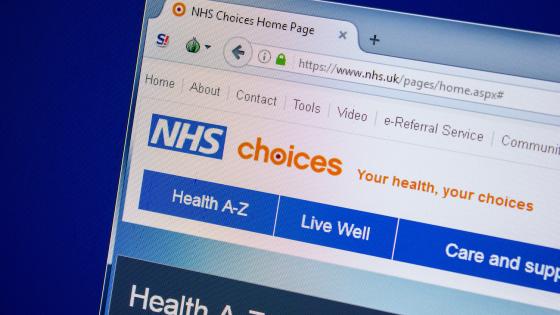Policymakers strive to ensure equitable, high-quality healthcare for all, regardless of socioeconomic status. Despite this, significant inequalities persist across the world, even in countries with free, publicly provided systems (OECD 2014, Cookson et al. 2016, Scobie and Morris 2020). High income patients tend to receive care from higher quality doctors and hospitals than low-income patients.
What drives these disparities? Unequal access is part of the answer. Low-income patients face a range of barriers that prevent them from reaching the best providers. For example, high-quality hospitals are often located far from low-income neighbourhoods. Technological or bureaucratic hurdles may make it difficult to register with a family doctor or specialist. To address this, health systems like England’s National Health Service (NHS) have invested significant resources into expanding access (NHS 2016) and giving patients more autonomy in healthcare choice. The hope is that widespread accessibility will help patients select the top providers to suit their needs.
While access is essential, it is not the whole story. Even when offered the same choices, low-income patients tend to select lower-quality providers. In our recent research (Brown et al. 2023) we ask whether disparities in information help generate this pattern. When searching for a new doctor, patients differ in their ability to gather recommendations from friends or family or conduct independent research. If these differences fall along income lines, they may help explain healthcare inequalities.
Our study uses data from England and focuses on a central healthcare decision patients make: which general practitioner (GP) to register with? While registration is free, and patients are in principle given broad flexibility in provider choice, past research has confirmed that patients in affluent neighbourhoods are more likely to choose the highest-quality GPs from the set of nearby doctors (Santos et al. 2017).
Our analysis centres on the presence of a review system provided on the NHS website, which was discontinued in early 2020. Similar to platforms like Trip Advisor or Yelp, patients could review and score their doctors on a scale of 1 to 5 stars. The website displayed a summary star, visible to all users, which was the average score rounded to the nearest half star. This rounding convention meant that GPs with nearly identical average score appeared with a different summary star rating. A doctor with an average of 3.74 would appear with a rating of 3.5 stars, while a doctor with an average of 3.76 appeared with a rating of 4 stars. Comparing patient enrollment for these very similar GPs allows us to isolate the impact of the information contained in the star ratings themselves.
What do patients’ reactions to this review system tell us about disparities in information? If a patient has done extensive research and already understands the differences in quality between GPs, they will not learn much from the rounded star ratings. Such an individual knows which GPs are very similar in quality and will not read too much into the fact that one might appear with 4 stars instead of 3.5. On the other hand, an individual who has no background information will be forced to rely almost exclusively on the star ratings when choosing a doctor. With this logic in mind, we separately examined the enrollment response to star ratings for high- and low-income patients.
The results were surprising. Low-income patients were significantly more responsive to star ratings. They were much more likely to choose a doctor if the star rating was just barely rounded up, compared to similar doctors with a star rating that was just barely rounded down. Alternatively, high-income individuals hardly reacted to star ratings at all. These patients consistently chose higher quality doctors but were unlikely to choose a GP just because the star rating happened to be rounded up instead of rounded down. This suggests that high income patients had access to other sources of information about GP quality, while low-income patients were forced to lean heavily on the website.
To quantify the role of information differences on healthcare inequality more broadly, we conducted a series of simulations rooted in in our analysis of the data. These simulations allow us to understand the choices patients would make if they had more precise background information about GP quality. Compared to the current status quo, we found that equalising information across income groups would reduce disparities by approximately one-fifth. In other words, information differences are a significant source of healthcare inequities across the income distribution. Moreover, we simulated the effects of providing patients with more equal access to doctors, alongside more equal information, and find that the two reinforce one another: individuals benefit more from choice when then they have the information to select the best doctors.
These findings highlight the importance of providing easy-to-access information and ensuring that patients have the tools to make better choices. Our results indicate that low-income patients benefited most from the NHS review system, and that its removal in 2020 was particularly harmful to these patients. However, it is worth noting that star ratings based on patient reviews are not necessarily the sole or best source of information. Making other key information about healthcare providers easily accessible would likely also help address disparities and empower individuals to make informed choices.
Many countries are currently debating whether patients should have greater autonomy when making healthcare decisions, including the choice of medical providers. While evidence suggests that choice can benefit patients (Gaynor et al. 2016), our study highlights an important caveat. Patients benefit from choice when they can make informed decisions, which may not always be the case if information is not readily available. We hope further research explores methods of providing user-friendly information that empowers all patients, not just those proficient in navigating a complex healthcare system.
References
Brown, Z Y, C Hansman, J Keener, and A F. Veiga (2023), “Information and Disparities in Health Care Quality: Evidence from GP Choice in England”, NBER Working Paper No. w31033.
Cookson, R, C Propper, M Asaria, and R Raine (2016), “Socio-economic inequalities in health care in England,” Fiscal Studies 37(3-4): 371–403.
Gaynor, M, C Propper, and S Seiler (2016), “Free to choose? Reform, choice, and con- sideration sets in the English National Health Service,” American Economic Review 106(11): 3521–57.
NHS (2016), “NHS England response to the specific duties of the Equality Act Equality information relating to public facing functions”, January.
OECD – Organisation for Economic Co-operation and Development (2014), Health at a Glance: Europe 2014.
Santos, R, H Gravelle, and C Propper (2017), “Does quality affect patients’ choice of doctor? Evidence from England,” The Economic Journal 127(600): 445–494.
Scobie, S, and J Morris (2020), Quality and inequality: digging deeper, Technical Report, Nuffield Trust.






